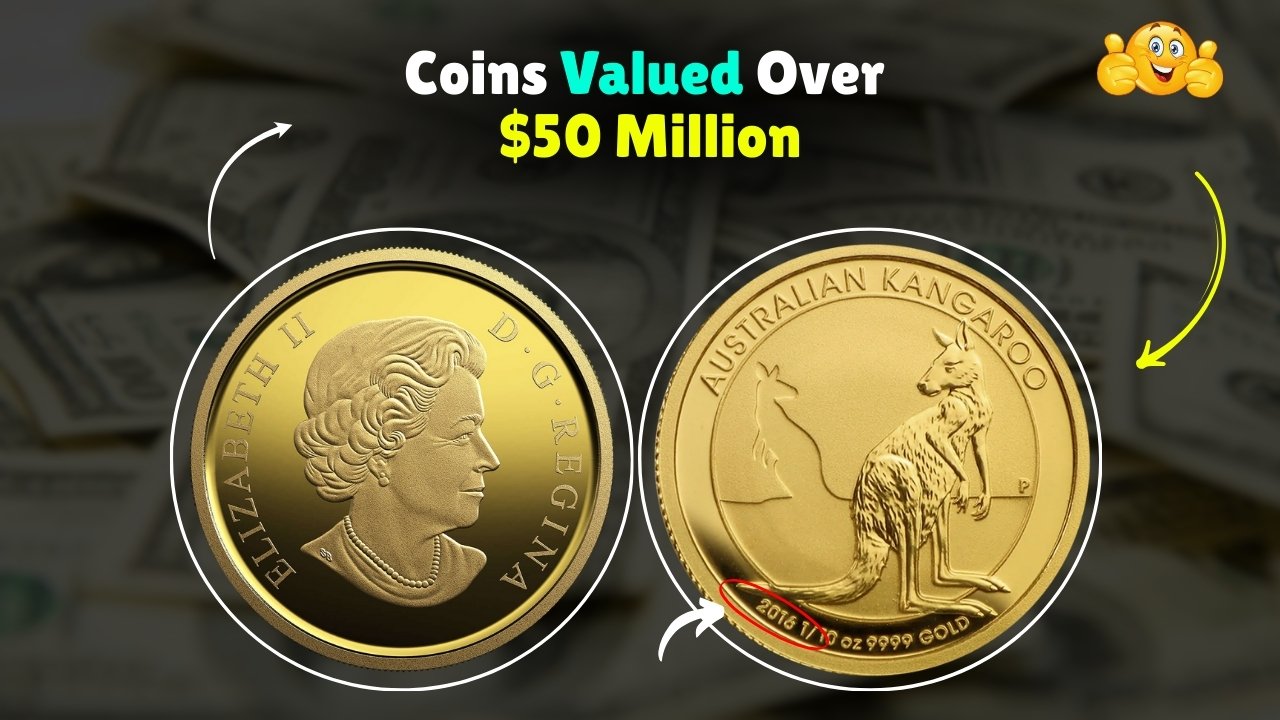Join on WhatsApp
Get the latest updates directly on WhatsApp – motivation, news & more!
Coin collecting is more than a hobby; it can be a path to owning pieces of history worth incredible sums. While most coins hold only nominal value, certain rare and historically significant coins have commanded prices in the millions. Among these, a rare 1976 Bicentennial quarter has recently been valued at $36 million, making it one of the most extraordinary coins in modern numismatics. In addition to this quarter, there are seven other coins that collectors and investors prize, each valued at over $50 million. Understanding what makes these coins so valuable offers insight into the world of high-stakes coin collecting.
The $36 Million Bicentennial Quarter
The Bicentennial quarter, released in 1976 to commemorate the United States’ 200th anniversary, is already iconic for its design featuring a colonial drummer and thirteen stars on the reverse. While most Bicentennial quarters are worth only their face value, a rare version has emerged as a collector’s ultimate prize.
This particular quarter is extraordinary due to a combination of rarity, minting error, and perfect condition. Experts believe it may have been struck on a unique experimental planchet or contains an unusual die error that distinguishes it from the millions of standard coins produced. Coins of this type are rarely seen on the market, and the scarcity, combined with pristine preservation, has pushed its estimated value to $36 million.
Collectors are drawn not only to the financial potential but also to the historical significance. Owning a coin like this is akin to holding a tangible piece of American heritage, and the story behind its creation adds to its allure.
Seven Other Coins Worth Over $50 Million
Beyond the Bicentennial quarter, several coins have reached astonishing values in the collector market. Each of these coins represents a unique combination of rarity, historical importance, and pristine condition.
1. 1794 Flowing Hair Silver Dollar
Believed to be the first silver dollar struck by the U.S. Mint, the 1794 Flowing Hair Silver Dollar is one of the rarest and most valuable coins. In 2013, a specimen sold for over $10 million, demonstrating the enduring demand for this historic piece. Its value stems from its role in American history and the limited number of coins that survive today.
2. 1933 Saint-Gaudens Double Eagle
The 1933 $20 gold coin is legendary due to the gold recall during the Great Depression. Only a few survived, making it extremely rare. One coin sold at auction for over $18 million, highlighting both its historical significance and appeal to high-end collectors.
3. 1804 Silver Dollar
Known as the “King of American Coins,” the 1804 Silver Dollar was struck primarily for diplomatic gifts, despite bearing the 1804 date. Only a handful exist, and examples in excellent condition have sold for millions. Its scarcity and storied history make it one of the most coveted coins in existence.
4. 1913 Liberty Head Nickel
With only five known examples, the 1913 Liberty Head Nickel is an ultra-rare coin that commands immense interest. Its unique backstory, involving unofficial minting, adds to its value. Collectors and investors are drawn to its combination of rarity, history, and proven auction performance.
5. 1792 Half Disme
The 1792 Half Disme is often considered the first official coin minted by the United States. Limited production and the survival of only a few specimens contribute to its high value. Its historical importance as a pioneer of U.S. coinage makes it highly prized among collectors.
6. 1916 Standing Liberty Quarter
Certain 1916 Standing Liberty quarters are extremely rare, particularly the Type 1 variety. With low mintage numbers and strong demand among collectors, examples in mint condition have sold for several million dollars. Its appeal lies in both artistry and scarcity.
7. 1802 Draped Bust Silver Dollar
The 1802 Draped Bust Silver Dollar is another rare coin from early U.S. history. Limited minting, exceptional historical context, and well-preserved examples have led to extraordinary auction prices, with some specimens exceeding $50 million when including their historical significance and collector premiums.
Factors That Drive Coin Value
Several key factors contribute to the extreme valuations of these coins:
- Rarity: Limited mintage and the number of surviving specimens make a coin highly sought after.
- Condition: Mint-state coins with no wear, scratches, or discoloration are more valuable than circulated examples.
- Historical Significance: Coins tied to major events or periods in history carry premium value.
- Provenance: Coins with documented history of ownership, especially through notable collections, tend to fetch higher prices.
- Market Demand: Popularity among collectors and investors ensures that rare coins retain and increase in value over time.
How Collectors Approach High-Value Coins
Investing in ultra-rare coins requires expertise and careful research. Collectors often rely on professional grading services such as PCGS or NGC to verify authenticity and condition. Auctions provide transparent pricing and historical sales data, helping collectors make informed decisions. Many collectors also diversify their investments, combining historical coins with modern rarities to balance potential risk and reward.
Conclusion
The $36 million Bicentennial quarter and the seven other coins valued at over $50 million showcase the extraordinary potential of rare coin collecting. These coins are not just financial assets; they are pieces of history that offer insight into the nation’s past. Whether through minting errors, historical significance, or exceptional rarity, each coin tells a unique story while offering incredible value to collectors and investors. For those with the knowledge and resources, investing in such coins is not only a way to preserve history but also a means to potentially achieve significant financial rewards.

